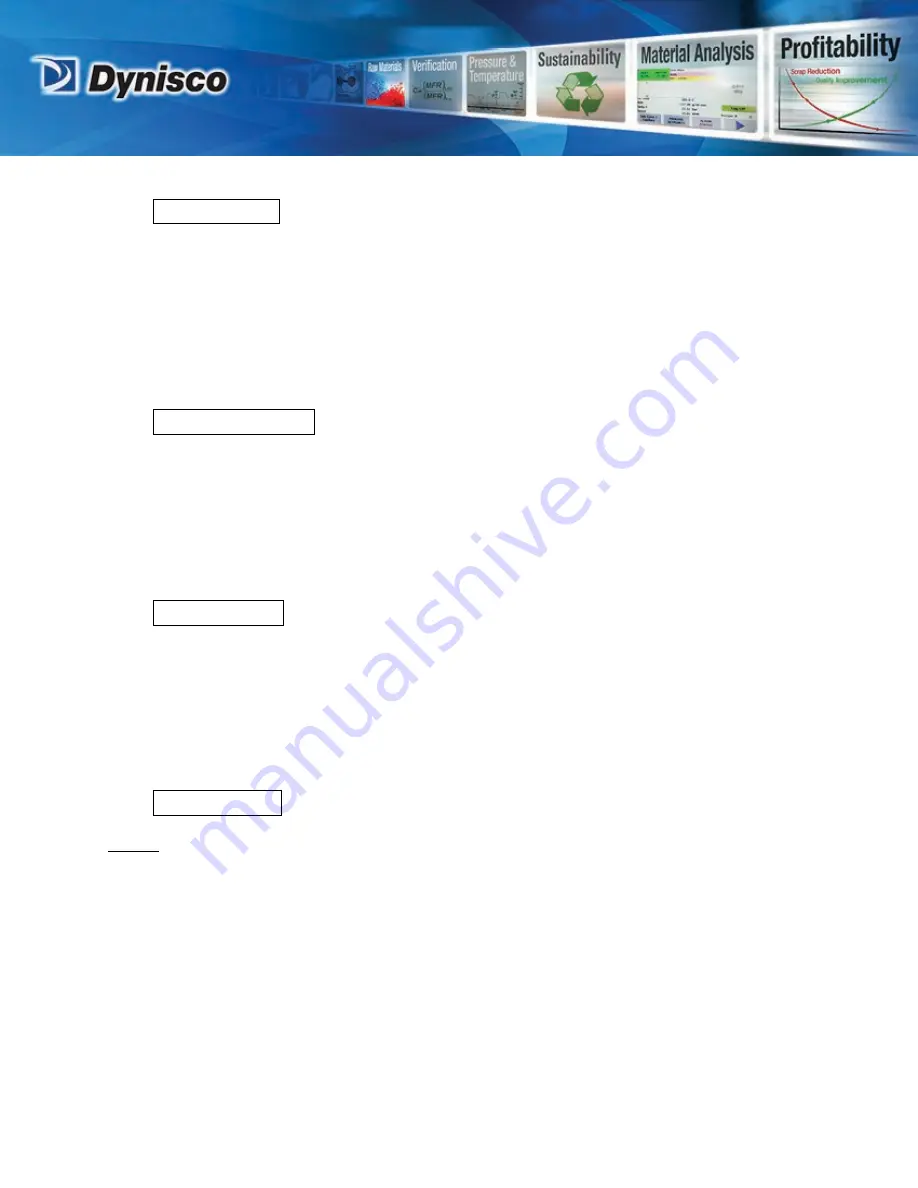
LCR7000 & RHEOSIGHTS P/N: 974194 |
Rev: A
|
ECO: 52468
www.dynisco.com
From lab to production,
providing a window into the process
-87-
If the die has a flat entrance angle a handheld micrometer can be used to measure the die
length. For dies with an entrance angle other than flat, a small precision ball, which is only
slightly larger in diameter than the die capillary diameter, can be mounted to a dial
indicator. Small errors in the cone angle will affect the die length measurement very little if
the ball is close to the capillary size. Be sure the entrance cone and faces of the die are
extremely clean before measuring.
The support vendor list shows the address for a bore gage manufacturer. Once the barrel is
extremely clean (all dimensional measurements are to be made at room temperature) it
can be checked using a bore gage. Be sure to get or make a long enough extension to the
gage so the entire barrel can be checked. The barrels are specified at 9.550
±
0.005 mm
leaving the factory.
Clean the barrel-tip with a piece of bronze wool or a like material. Use a handheld
micrometer to verify the room temperature diameter of 9.515 to 9.520 mm. This is on the
low side of the ASTM specification (but still within barrel - plunger tolerance
specifications), since we have found that larger tips can cause seizing in the barrel at higher
temperatures.
Galaxy
There are two grease fittings on the Galaxy V rheometer. One is located on the lower right
side of the worm gear reducer system (just behind main pulley) and the other behind the
left pole on the swing arm. These should be lubricated about once a year (G.P. #2 grease).
The poles, which guide the crosshead-load cell assembly, can become dry and cause stick-
slip sliding (which may cause measurement errors) and a squeaking sound. A short spray
of WD-40 or similar lubricant will remedy this.
8.
Die Length
9.
Barrel Diameter
10.
Plunger Tip
11.
Lubrication






























